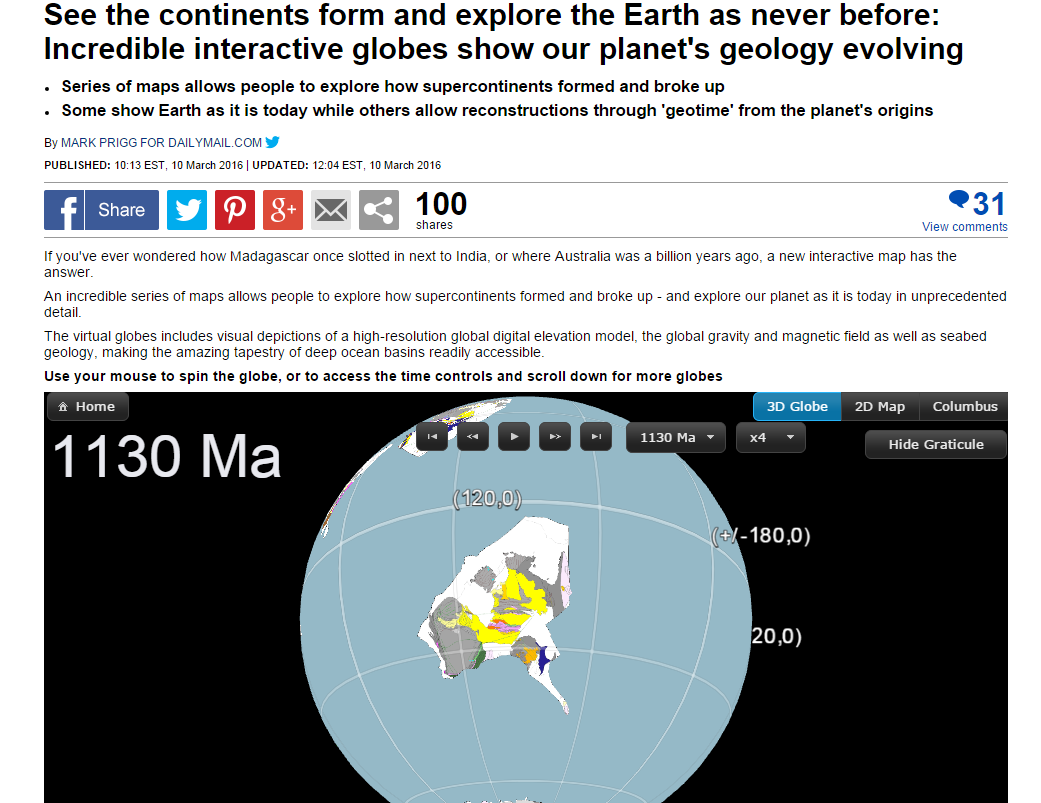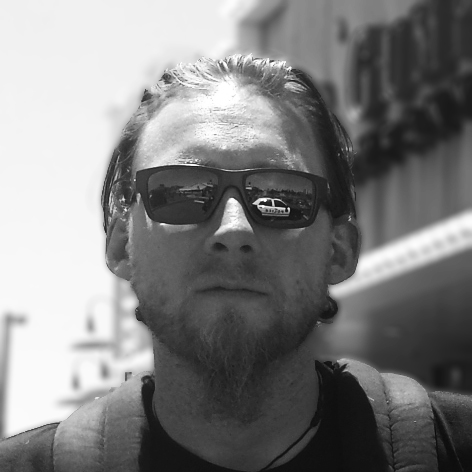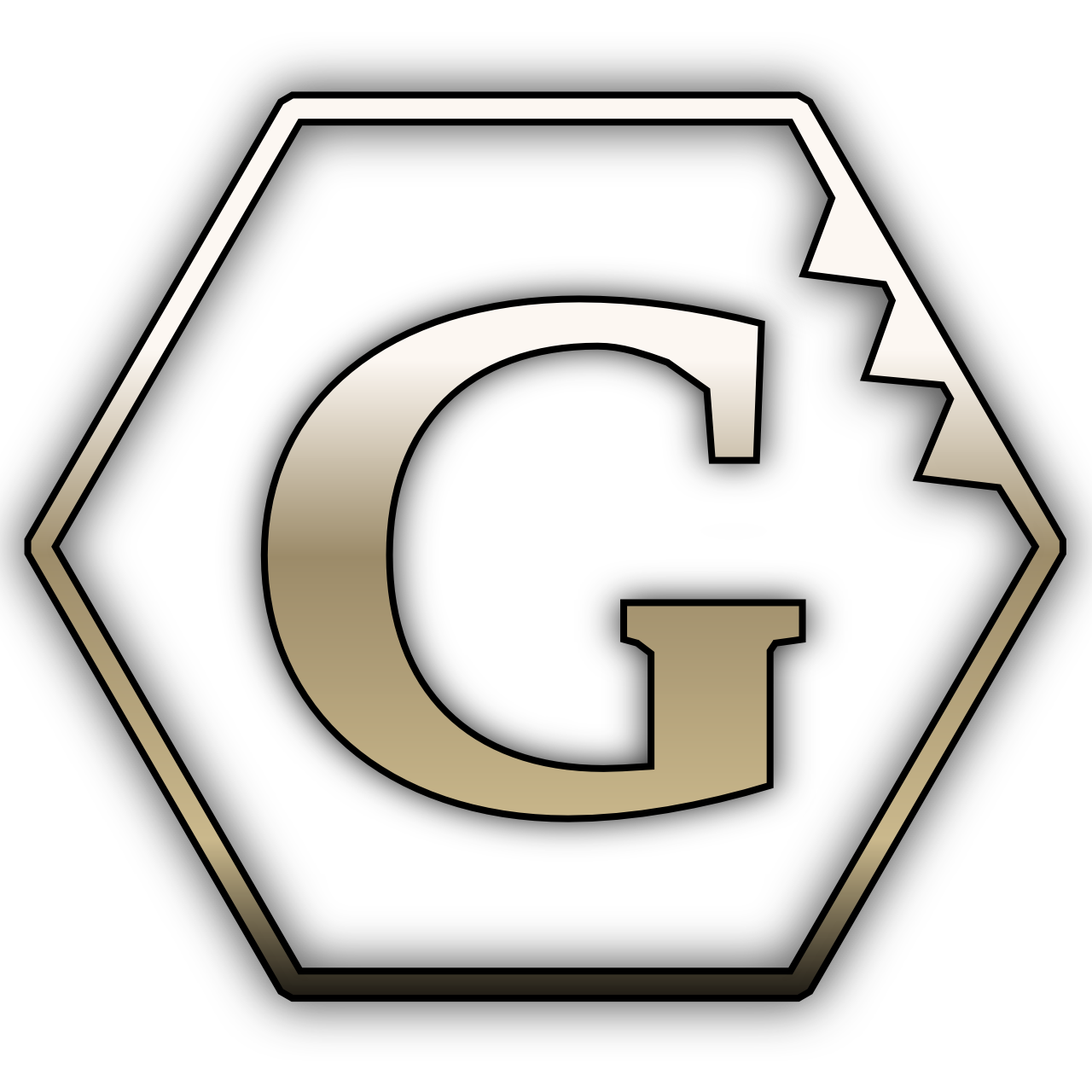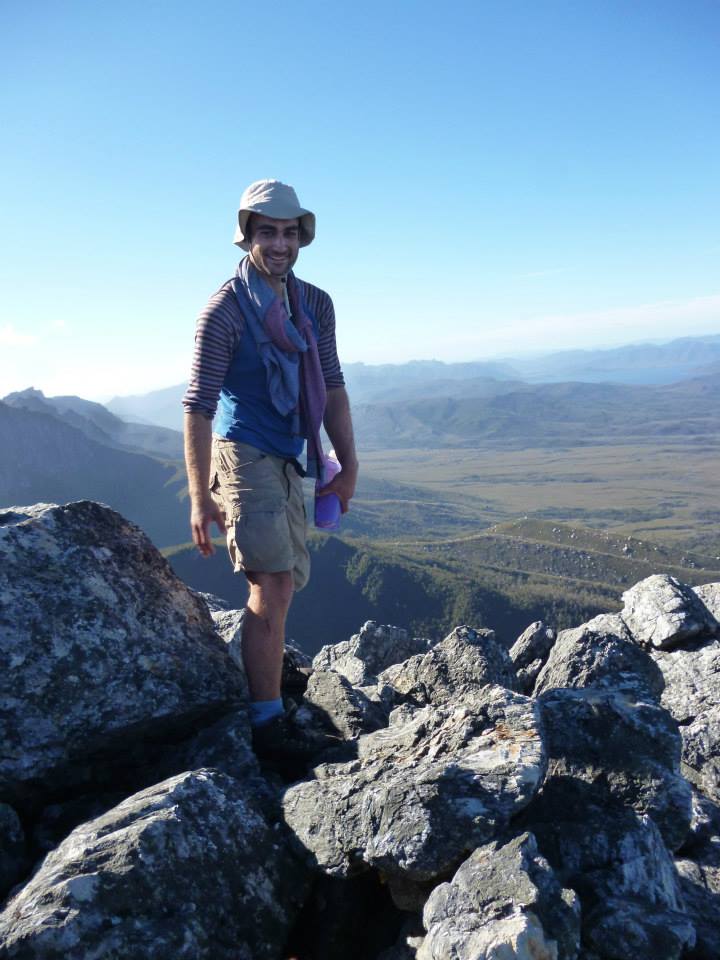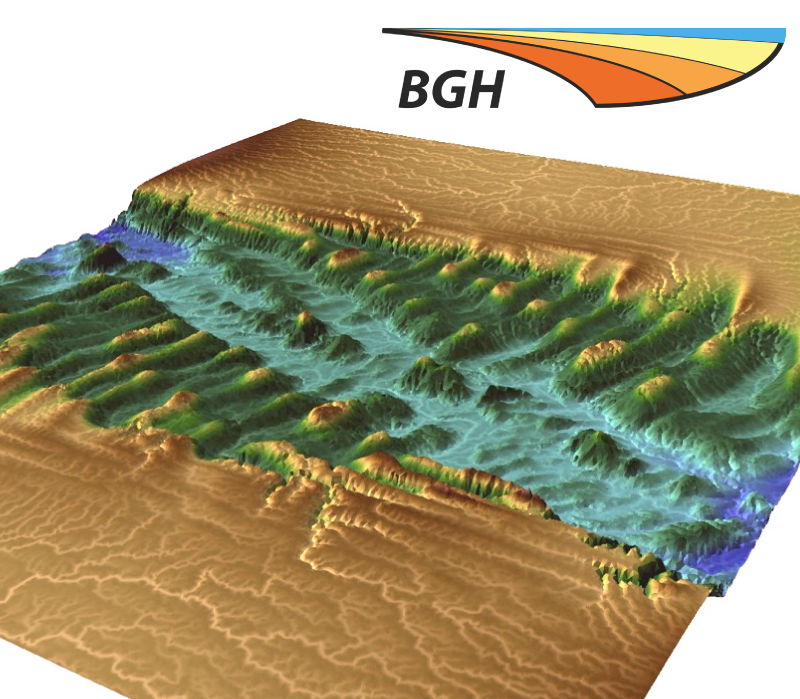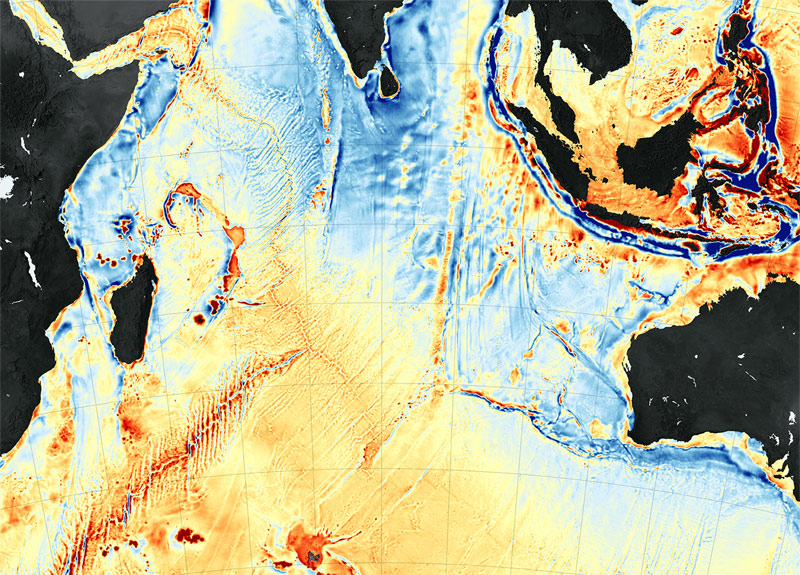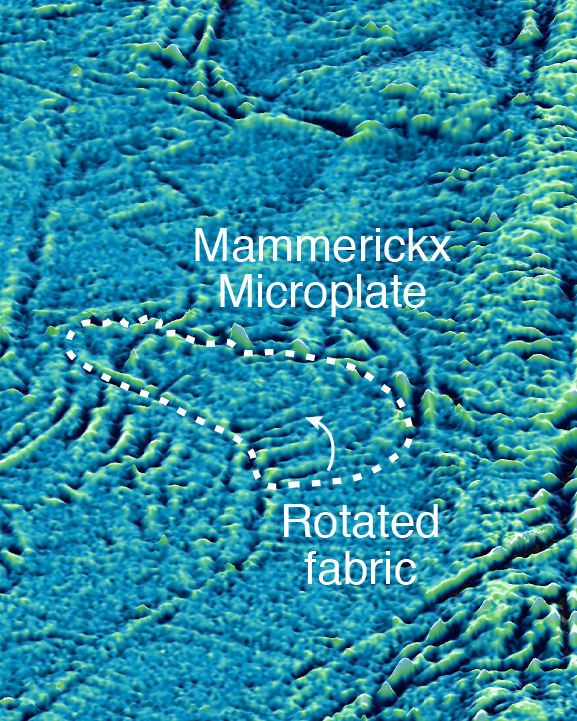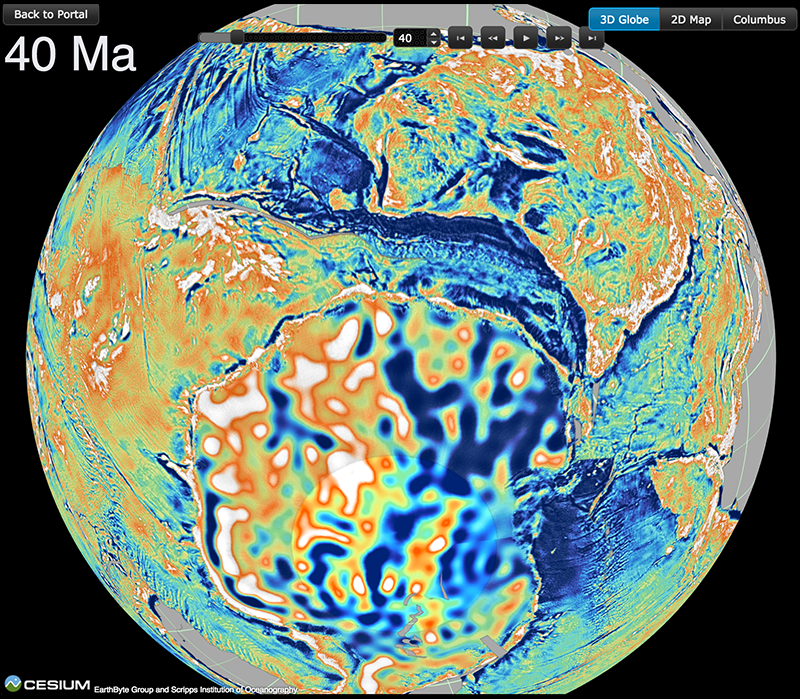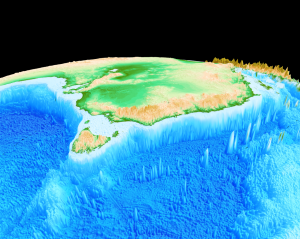 Congratulations to Prof Dietmar Müller, Dr Nicolas Flament, Dr Kara Matthews, Dr Simon Williams, and Prof Michael Gurnis on their paper recently published in Earth and Planetary Science Letters. Their paper, Formation of Australian continental margin highlands driven by plate-mantle interaction, has featured in a variety of Australian and international media outlets.
Congratulations to Prof Dietmar Müller, Dr Nicolas Flament, Dr Kara Matthews, Dr Simon Williams, and Prof Michael Gurnis on their paper recently published in Earth and Planetary Science Letters. Their paper, Formation of Australian continental margin highlands driven by plate-mantle interaction, has featured in a variety of Australian and international media outlets.
Geologists Discover How Australia’s Highest Mountain Formed – Media Release
 Geologists from the University of Sydney and the California Institute of Technology have solved the mystery of how Australia’s highest mountain – Mount Kosciusko – and surrounding alps came to exist.
Geologists from the University of Sydney and the California Institute of Technology have solved the mystery of how Australia’s highest mountain – Mount Kosciusko – and surrounding alps came to exist.
Most of the world’s mountain belts are the result of two continents colliding (including the Himalayas) or volcanism. The mountains of Australia’s Eastern highlands – stretching from north-eastern Queensland to western Victoria – are an exception. Until now no one knew how they formed.
Computers & Geosciences – Badlands: An open-source, flexible and parallel framework to study landscape dynamics
Author List: Tristan Salles, Luke Hardiman Citation: Salles, T., and Hardiman, L. (2016). Badlands: An open-source, flexible and parallel framework to study landscape dynamics. Computers & Geosciences 91 77–89. DOI: 10.1016/j.cageo.2016.03.011 Abstract: In this paper, we propose a minimal numerical model which governing equations describe the following processes: erosion, sedimentation, diffusion and flexure. The model respects conservation … Read more…
Computers & Geosciences – Badlands: An open-source, flexible and parallel framework to study landscape dynamics
Salles, T., and Hardiman, L. (2016). Badlands: An open-source, flexible and parallel framework to study landscape dynamics. Computers & Geosciences 91 77–89. DOI: 10.1016/j.cageo.2016.03.011 Badlands: An open-source, flexible and parallel framework to study landscape dynamics
PLOS ONE – The GPlates Portal: Cloud-Based Interactive 3D Visualization of Global Geophysical and Geological Data in a Web Browser
Author List: Dietmar Müller, Xiaodong Qin, David Sandwell, Adriana Dutkiewicz, Simon Williams, Nicolas Flament, Stefan Maus, Maria Seton Citation: Müller, R. D., Qin, X., Sandwell, D. T., Dutkiewicz, A., Williams, S. E., Flament, N., Maus, S., & Seton, M. (2016). The GPlates Portal: Cloud-Based Interactive 3D Visualization of Global Geophysical and Geological Data in a Web Browser. … Read more…
Earth and Planetary Science Letters – Formation of Australian continental margin highlands driven by plate–mantle interaction
Author List: Dietmar Müller, Nicolas Flament, Kara Matthews, Simon Williams and Mike Gurnis Citation: Müller, R. D., Flament, N., Matthews, K. J., Williams, S. E., & Gurnis, M. (2016). Formation of Australian continental margin highlands driven by plate–mantle interaction. Earth and Planetary Science Letters, 441, 60–70. http://dx.doi.org/10.1016/j.epsl.2016.02.025 Formation of Australian continental margin highlands driven by plate–mantle … Read more…
Geophysical Research Letters – Alignment between seafloor spreading directions and absolute plate motions through time
Author List: Simon Williams, Nicolas Flament and Dietmar Müller Citation: Williams, S., Flament, N., & Müller, R. D. (2016). Alignment between seafloor spreading directions and absolute plate motions through time. Geophysical Research Letters, 43, 1472–1480, doi:10.1002/2015GL067155. Alignment between seafloor spreading directions and absolute plate motions through time
Earth-Science Reviews – The Late Cretaceous to recent tectonic history of the Pacific Ocean basin
Wright, N. M., Seton, M., Williams, S. E., & Müller, R. D. (2016). The Late Cretaceous to recent tectonic history of the Pacific Ocean basin. Earth-Science Reviews, 154, 138–173. http://dx.doi.org/10.1016/j.earscirev.2015.11.015 The Late Cretaceous to recent tectonic history of the Pacific Ocean basin
Earth and Planetary Science Letters – Assessing the role of slab rheology in coupled plate-mantle convection models
Bello, L., Coltice, N., Tackley, P. J., Müller, R. D., & Cannon, J. (2015). Assessing the role of slab rheology in coupled plate-mantle convection models. Earth and Planetary Science Letters, 430, 191–201. http://dx.doi.org/10.1016/j.epsl.2015.08.010 Assessing the role of slab rheology in coupled plate-mantle convection models
Tectonophysics – Full-fit reconstruction of the South China Sea conjugate margins
Bai, Y., Wu, S., Liu, Z., Müller, R. D., Williams, S. E., Zahirovic, S., & Dong, D. (2015). Full-fit reconstruction of the South China Sea conjugate margins. Tectonophysics, 661, 121–135. http://dx.doi.org/10.1016/j.tecto.2015.08.028 Full-fit reconstruction of the South China Sea conjugate margins
Geophysical Research Letters – Mantle-induced subsidence and compression in SE Asia since the early Miocene
Author List: Ting Yang, Mike Gurnis, Sabin Zahirovic Citation: Yang, T., M. Gurnis, and S. Zahirovic (2016), Mantle–induced subsidence and compression in SE Asia since the early Miocene, Geophysical Research Letters, doi: 10.1002/2016GL068050. Mantle-induced subsidence and compression in SE Asia since the early Miocene
GPlates Portal International Media Coverage
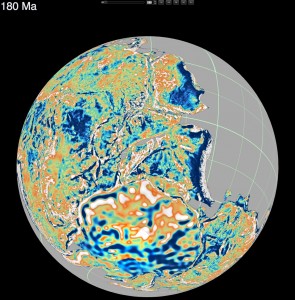 The recent article on the GPlates Portal published in PLOS ONE by Prof Dietmar Müller, Xiaodong Qin, Prof David Sandwell, Dr Adriana Dutkiewicz, Dr Simon Williams, Dr Nicolas Flament, Dr Stefan Maus, and Dr Maria Seton, has received significant international media attention over the past week, featuring in articles from Australia, UK, US, India, and UAE!
The recent article on the GPlates Portal published in PLOS ONE by Prof Dietmar Müller, Xiaodong Qin, Prof David Sandwell, Dr Adriana Dutkiewicz, Dr Simon Williams, Dr Nicolas Flament, Dr Stefan Maus, and Dr Maria Seton, has received significant international media attention over the past week, featuring in articles from Australia, UK, US, India, and UAE!
See the list of online media below, and check out the interactive globes yourself!
Virtual Time Machine Of Earth’s Geology Now In The Cloud
 How did Madagascar once slot next to India? Where was Australia a billion years ago?
How did Madagascar once slot next to India? Where was Australia a billion years ago?
Cloud-based virtual globes developed by a team led by University of Sydney geologists mean anyone with a smartphone, laptop or computer can now visualise, with unprecedented speed and ease of use, how the Earth evolved geologically.
Reported today in PLOS ONE, the globes have been gradually made available since September 2014. Some show Earth as it is today while others allow reconstructions through ‘geological time’, harking back to the planet’s origins.
Uniquely, the portal allows an interactive exploration of supercontinents. It shows the breakup and dispersal of Pangea over the last 200 million years. It also offers a visualisation of the supercontinent Rodinia, which existed 1.1 billion years ago. Rodinia gradually fragmented, with some continents colliding again more than 500 million years later to form Gondwanaland.
Creating an evolving model of carbonate platform development and accumulation
What do crustal carbonates have to do with CO2 emissions? The proliferation of reefs and carbonate platforms in shallow-water environments contribute to accumulation of organic-C-rich carbonate rocks along the edge of continents. These platforms are a persistent phenomenon throughout the Phanerozoic and strongly suggests that large volumes of carbonates are buried in the upper crust within the … Read more…
EarthByte Welcomes Ian Howson
EarthByte welcomes Ian Howson to the group. He will be working with us as a software developer on the Badlands Project
Postgraduate Scholarship in Geodynamics/Plate Tectonics/Morphodynamics
Funding Body The University of Sydney Title Postgraduate Scholarship in Geodynamics/Plate Tectonics/Morphodynamics Research Areas Sciences & Engineering Type Postgraduate Research Description Applications are invited for a PhD scholarship in Plate Tectonics/ Geodynamics/ Morphodynamics working with members of the Basin Genesis Hub (an ARC Industrial Transformation Research Hub) within the EarthByte Group at the School of … Read more…
GPlates in Spanish news
The link below points to an article written about EarthByte and GPlates by a Spanish journalist. The article is titled: “Viaje en una máquina del tiempo virtual a la Tierra de hace 1.000 millones de años: … which translates into: Travel in a virtual time machine to Earth 1,000 million years ago. http://m.eldiario.es/hojaderouter/ciencia/gplates-pangea-geologia-historia-Tierra-big_data_0_482951817.html Buenos dias todos … Read more…
Mike Tetley wins International Geological Congress Travel Grant
Congratulations to PhD candidate Mike Tetley who was awarded a 34th International Geological Congress Travel Grant Scheme for Early-Career Australian and New Zealand Geoscientists. The funds will go towards his current 12-month research visit to Caltech where he is working with Prof Mike Gurnis, a world leader in Earth Dynamics, to study the evolution of … Read more…
pygplates beta revision 12 released
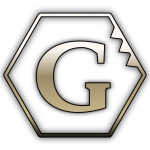 The first beta release of pygplates (the GPlates Python library) is now available for download.
The first beta release of pygplates (the GPlates Python library) is now available for download.
pygplates enables access to GPlates functionality via the Python programming language. This may be of particular use to researchers requiring more flexibility than is provided by the GPlates user interface.
The following pygplates functionality is available:-
- Load and save feature data (GPML, Shapefile, etc)
- Create/modify/query feature data
- Traverse/modify/query plate rotation hierarchy
- Partition into plates and assign plate properties
- Reconstruct geometries, flowlines, motion paths
- Resolve topological plates and query their boundary sections (ridges/subductions)
- Calculate velocities
- Distance between geometries (region-of-interest queries)
- Geometry queries (length, point-in-polygon, area, centroid, tessellate, interpolate, join, partition)
EarthByte welomes Sebastiano 'Sam' Doss
EarthByte welcomes new Research Assistant Sebastiano ‘Sam’ Doss to the group. Sebastiano is currently working on the Deep Carbon Observatory project, investigating the interaction of subduction zones with carbonate platforms over time in connection to CO2 flux in the atmosphere.
EarthByte welomes Sebastiano ‘Sam’ Doss
EarthByte welcomes new Research Assistant Sebastiano ‘Sam’ Doss to the group. Sebastiano is currently working on the Deep Carbon Observatory project, investigating the interaction of subduction zones with carbonate platforms over time in connection to CO2 flux in the atmosphere.
Papua New Guinea tectonics: Insights from arc magmatism
Speaker Dr Rob Holm, JCU. Date & Time Wednesday 27 January, 11 AM Location Madsen Building, Level 4 – Conference Room
2016 supercomputing resources
The EarthByte group has been awarded 11 million computing hours, representing the equivalent of k$AU440, to carry out research for the Basin GENESIS Hub on the supercomputers Raijin (National Computational Infrastructure) and Magnus (Pawsey Supercomputing Centre) for 2016 through the National Computational Merit Allocation Scheme (7.25 MSUs, one of the top 4 allocations across all disciplines … Read more…
EarthByte Welcomes Xianshi Cao
EarthByte Welcomes visiting student Xianshi Cao.
GPlates Portal receives a major facelift
The GPlates Portal has received a major facelift, using state-of-the-art web design. The primary design principle of the new front page is to convey the most important information to users in an effective way. The new grid layout guarantees the presentation of information is always in a user readable format on the screen of any … Read more…
EarthByte/Scripps research features on NASA Earth Observatory
NASA Earth Observatory features a piece on the recent Mammerickx Microplate discovery. Their Image of the Day for 13 January 2016 is a satellite gravity map of the Indian Ocean, and the associated article, entitled ‘New Seafloor Map Helps Scientists Find New Features‘, discusses the power of satellite data for seafloor mapping and details the … Read more…
Earth and Planetary Science Letters – Oceanic microplate formation records the onset of India–Eurasia collision
Author List: Kara Matthews, Dietmar Müller and David Sandwell Citation: Matthews, K. J., Müller, R. D., & Sandwell, D. T. (2016). Oceanic microplate formation records the onset of India–Eurasia collision. Earth and Planetary Science Letters, 433, 204-214. Oceanic microplate formation records the onset of India–Eurasia collision
Summer Scholarship Students 2016
QGIS application in field geology Basin GENESIS Hub Supervisors: A/Prof Patrice, Dr Sabin Zahirovic, Luke Mondy, Prof Dietmar Müller Jo Tobin Geographic information systems (GIS) have played a significant role in the advances in geologic field data analysis. This project involves the use of QGIS (an open source, community driven GIS which runs on Linux, Windows … Read more…
Incredibly detailed, billion-year-old ancient maps of Earth produced by researchers
An article discussing GPlates and research that EarthByte is involved in has been featured on the IFL Science! website entitled ‘Incredibly Detailed, Billion-Year-Old Ancient Maps Of Earth Produced By Researchers‘.
Data Processing and Plotting Using Generic Mapping Tools (GMT) Course
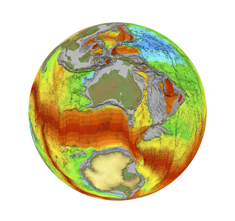 Course Overview
Course Overview
This course is designed to introduce students to different types of spatial data, data processing and interpolation functions and data plotting using GMT (Generic Mapping Tools). GMT is a set of public domain tools that will be used in conjunction with UNIX general processing tools (awk, grep) and basic shell programming. The examples presented in the course will focus on marine geophysical data, however many of the principles are applicable to other scientific data.
The learning outcomes for the course include: … Read more…

